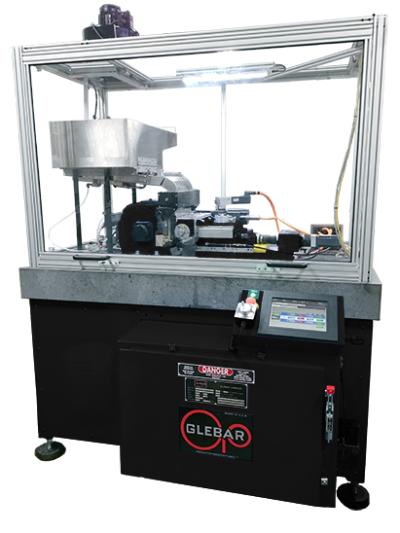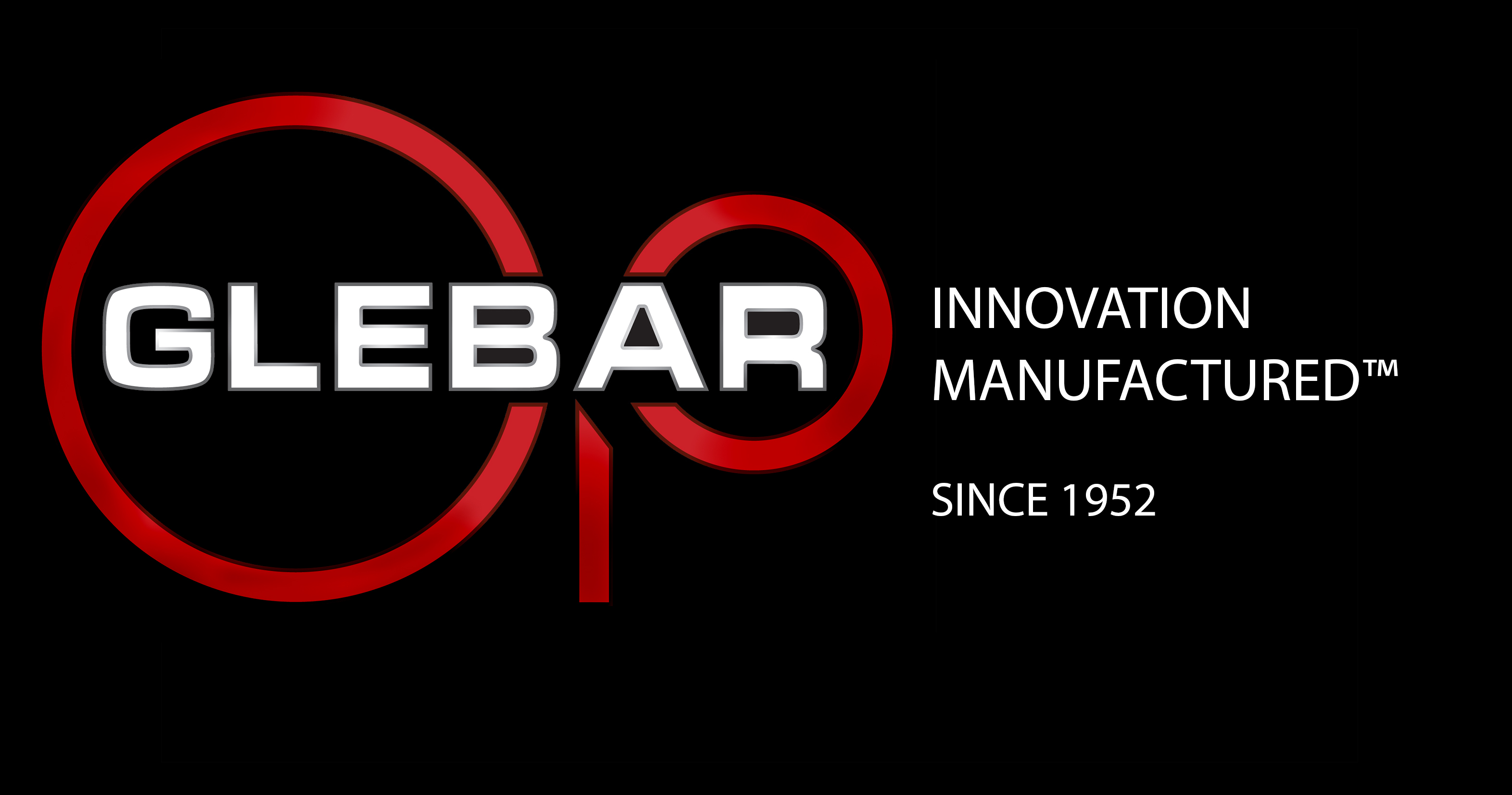
Glebar is proud to announce the launch of their PG-912DG Enclosed Centerless Form Grinder. The new grinder is the latest model in their robust Plunge Grinder series. It is designed to increase throughput, reduce setup times, and achieve tighter tolerances. Additionally, it provides better integration to gauges, automation, and remote service diagnostics.
At the core of the PG-912DG is a 12” wide work wheel. The wider work wheel allows manufacturers to grind more material or parts per cycle. In testing, Glebar’s engineers were able to increase throughput by as much as 30%.
Glebar pairs the wider work wheel with an oscillating regulating wheel powered by servo motors to reduce setup time and improve sphericity. The slides can be programmed to finite positions through a touchscreen HMI. When an operator selects a job, the servo motors automatically adjust to programmed positions which reduces setup time.
“The position of the regulating wheel is critical to the accuracy of the grind. Using servo motors to position the regulating wheel creates greater repeatability in the grind and can maintain a tighter tolerance. In testing, we were able to achieve a Cpk two times greater than the existing process,” said John Bannayan, CTO.
In this specific application, a stainless-steel hopper automatically drops parts into the feeder channeling them into singular stations on the plunge grinder. Within a 14 second cycle, up to 12” of parts can be ground simultaneously. The servo powered oscillating regulating wheel assembly rotates the balls randomly improving sphericity. An interlocking safety enclosure and mist collector provide a safe and clean work environment. The granite machine bed helps to provide enhanced rigidity as well as thermal and vibratory stability. The high speed multi axis control system can expand the machine functionality and includes the ability to remotely diagnose the machine and gather production data for reporting.
Glebar developed ball grinding for the golf ball industry in the 1960s using centerless grinding fundamentals. The process was adapted to grind deodorant balls and other spherical or cylindrically shaped components. Their plunge grinders can grind most hard to turn materials such as carbon fiber, fiberglass, and polypropylene, and are designed to grind parts as small as 0.050” to 4” diameter on the same machine. Any spherical or cylindrical component can be shaped into unlimited forms on a large variety of materials such as rubber, plastics, carbon fiber, Teflon (PTFE), and various metals. A multitude of applications can be ground including insulators for electronic components, fuse bodies, crystal quartz glass for fiber optics, check valves for pumps and valves, golf balls, deodorant balls, and other consumer product components.
Contact Details
Related Glossary Terms
- centerless grinding
centerless grinding
Grinding operation in which the workpiece rests on a knife-edge support, rotates through contact with a regulating or feed wheel and is ground by a grinding wheel. This method allows grinding long, thin parts without steady rests; also lessens taper problems. Opposite of cylindrical grinding. See cylindrical grinding; grinding.
- grinding
grinding
Machining operation in which material is removed from the workpiece by a powered abrasive wheel, stone, belt, paste, sheet, compound, slurry, etc. Takes various forms: surface grinding (creates flat and/or squared surfaces); cylindrical grinding (for external cylindrical and tapered shapes, fillets, undercuts, etc.); centerless grinding; chamfering; thread and form grinding; tool and cutter grinding; offhand grinding; lapping and polishing (grinding with extremely fine grits to create ultrasmooth surfaces); honing; and disc grinding.
- tolerance
tolerance
Minimum and maximum amount a workpiece dimension is allowed to vary from a set standard and still be acceptable.

